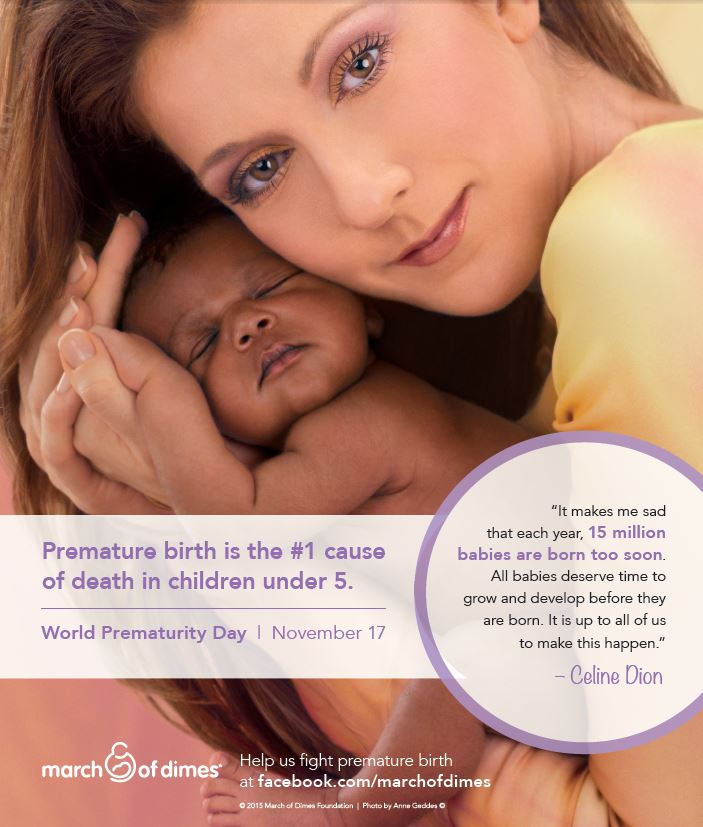
Preterm birth now outranks all other causes as the world’s number one killer of children under age five. Of the estimated 5.9 million deaths of children under five in 2015, complications of preterm birth account for nearly one million deaths.
These facts have become a rallying point for the millions of people who are expected to participate in the fifth annual World Prematurity Day on November 17.
I started working on prematurity prevention in 2003, when the March of Dimes “called the question”, launched its Prematurity Campaign, and began urging elected officials and stakeholders to confront the growing problem of premature birth in the United States. Those early years were a challenge.
The public didn’t see premature birth as important. The financial costs of premature birth had not yet been quantified. There were no strong evidence based prevention opportunities to point to. And the extent of the problem outside the U.S. was still unknown.
Now, 12 years later, a movement is underway, and the centerpiece of it is World Prematurity Day. Pioneering research is taking place in the United States at five Prematurity Research Centers funded by the March of Dimes that are working to identify the causes of preterm birth.
The global problem of preterm birth
Prevention opportunities have been identified, piloted and expanded.
Prevention opportunities have been identified, piloted and expanded, including the Healthy Babies are Worth the Wait® Community Program, innovative models for prenatal and interconception care, and quality improvement initiatives focused on early elective deliveries and access to progesterone for recurrence prevention.
Widespread attention to the global problem of preterm birth has gathered momentum, spurred on by two things. First, the 2012 publication of Born Too Soon: The Global Action Report on Premature Birth, authored by the March of Dimes, the World Health Organization, the Partnership for Maternal, Newborn, and Child Health, and Save the Children.
And second, through the work of country-based advocates and their joint efforts worldwide. The World Prematurity Network, for example, is a coalition of parent groups whose members call for actions to prevent preterm birth and improve care for babies born preterm.
Today, millions of people, and hundreds of governmental and non-governmental organizations are addressing prematurity in low-, middle-, and high-income countries. In the prevention arena, the growing focus is on four key factors, abbreviated as the ‘LINC factors: Lifestyle, Infection, Nutrition, and Contraception.
These include quality health care before and during pregnancy, diagnosis and treatment of infections and chronic diseases that increase the risk of preterm birth, birth spacing, and ensuring optimal nutritional status of women before and during pregnancy.
Prevent and improve
World Prematurity Day has become a platform for championing and announcing new investment and policy approaches to prevent preterm birth and improve newborn health.
World Prematurity Day has become a platform for championing and announcing new investment and policy approaches to prevent preterm birth and improve newborn health. Last year, governments and their Ministries of Health took action or lent support in many countries, including Bhutan, El Salvador, Ethiopia, Kenya, Malawi, Tanzania, Thailand, and Uganda.
Country-based groups bathed major landmarks and buildings in purple lights (the color associated with the cause) in more than 100 cities worldwide, and conducted educational events and outreach in their communities.
On November 17 2015, at a Prematurity Prevention Conference in the United States, the March of Dimes will unveil a multi-year plan to attack the problem of preterm birth in U.S. communities with the greatest burden, with the goal of reducing the U.S. preterm birth rate to 5.5% by 2030.
The March of Dimes 8th annual Premature Birth Report Cards, which grade states and the nation based on the distance of their preterm birth rate from the March of Dimes 2020 goal, were released earlier this month and set the stage for this new plan.

Throughout the month of November, television public service ads feature these celebrities who have lent their voices to the cause:
Thalia, Latin Grammy Award‐winning recording artist, who serves as March of Dimes global ambassador, in both English and Spanish.
Anne Geddes, renowned photographer and volunteer ambassador for the March of Dimes, is featured in a global PSA and in a print PSA featuring her iconic image of a premature baby.
Chef Maneet Chauhan, mother of a son born prematurely at 26 weeks, also stars in a global TV PSA.
Celine Dion, international singer, is featured in a global PSA in both English and French and a print PSA.
Hilary Duff, actress, singer and songwriter, speaks out in a mission PSA that is running nationwide.
You can help us spread the word even further. Opportunities for individuals and organizations include the following.
- visit com/WorldPrematurityDay to find ways to help;
- go to org or prematurityprevention.org to learn about prevention opportunities;
- register on it through Facebook, Twitter or Tumblr, to share a designated message to expand global awareness of premature birth.
With your help, we can prevent the childhood death and disability that are too often the consequences of a premature birth.
Comments